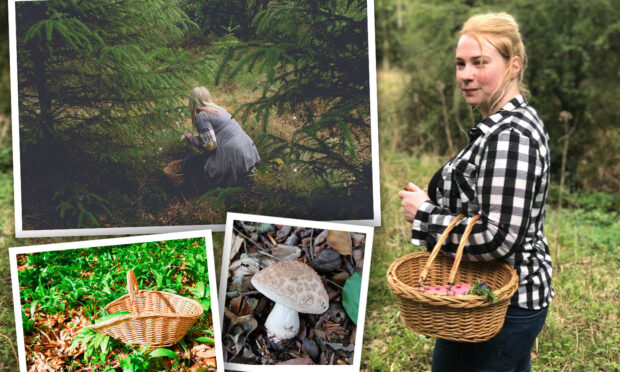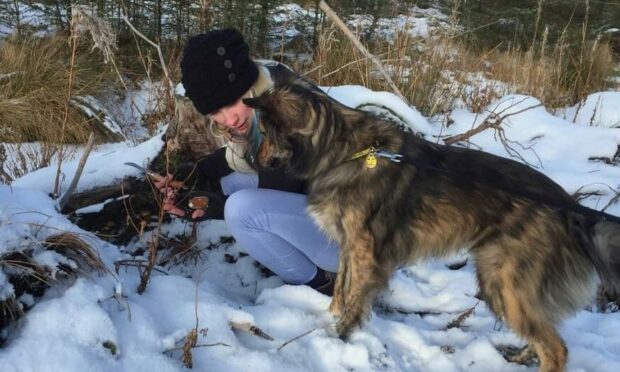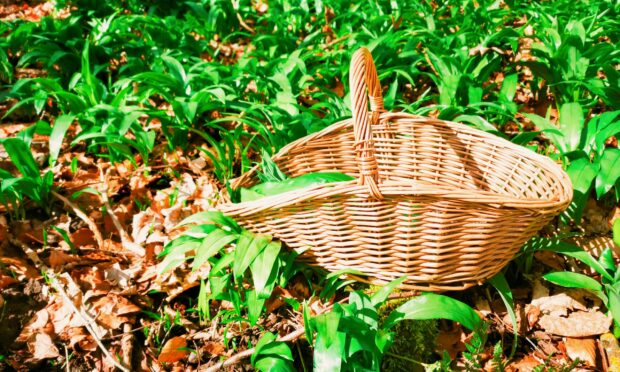Have you ever fancied foraging for wild food to take home and cook? Professional forager Amy Rankine can give you some of her top tips.
Based in Livingston, Amy is a forager and wild food consultant who runs Hipsters and Hobos. Her work varies from teaching courses and leading foraging walks to sourcing ingredients for breweries and the wider drinks industry.
And soon she’ll be taking her expertise to the Scottish Game Fair in Perthshire, as she mines the grounds of Scone Palace for seasonal ingredients.
Growing up in Mid Calder, West Lothian, Amy used to gather raspberries, brambles and wood sorrel with her mother.
These days she loves nothing more than rambling through woodland, gathering titbits with her dog.
Amy has a range of qualifications including an MSc in Gastronomy from Edinburgh’s Queen Margaret University.
She is also a member of the Association of Foragers and says the support and encouragement of fellow foragers helped her find a career she truly loves.
Foraging in Scone
In Scotland you can legally forage most places as an extension of the right to roam statutory access. But you can’t do it for commercial reasons and you are also not allowed to uproot plants.
While at Scone Palace for the three-day fair, Amy is hoping to find mushrooms as most of the “green” plants will now be out of season.
She says: “If you have a couple of really good days of rain – the kind that saturates the soil – then a couple of days of good sun, it’s the second day of sun that you’ll see things popping up.
“I know they will have some stunning waxcaps mushrooms because they’ve got a really old lawn and they’re a wonderful habitat for these beautiful, brightly coloured species.
“Definitely some boletes and, if we’re very lucky a beefsteak. They’ve got some nice oak trees where they grow.”
Top tips on how to get started
- Don’t eat anything unless you know what it is. If you cannot properly identify something, do not consume it.
- Some plants and fungi are easier to identify than others.
For those just starting to explore foraging, plants like puffball mushrooms and beefsteak mushrooms are much easier to identify because of their unique look. The beefsteak mushroom looks like a chunk of steak and bleeds red. You also don’t have to pick or eat things you are identifying. Pick a season to start identifying plants and watch as they change throughout the others. It’s much better to have this gradual building of knowledge. - Some things are very accessible to find, like wild garlic in the spring. The plant smells like garlic but it is important to note that other plants can grow alongside it, so as long as you have that garlic smell, you with have either harvested that, or wild leek.
- Location is key. There are particular plants that only grow at the seaside or in particular types of forest. There are also some fungi that don’t grow in more northerly parts of Scotland.
- Go out with an expert. Join a local forager for a day out and let them educate you on some of the plants on your doorstep. They will also be able to give you inspiration for the different seasons. There are numerous people across Scotland within the Association of Foragers who offer courses.
- Get a good guide book and explore your local area a few times before picking things. This way you will know where people tend to walk as you should avoid picking anything too close to pathways.


